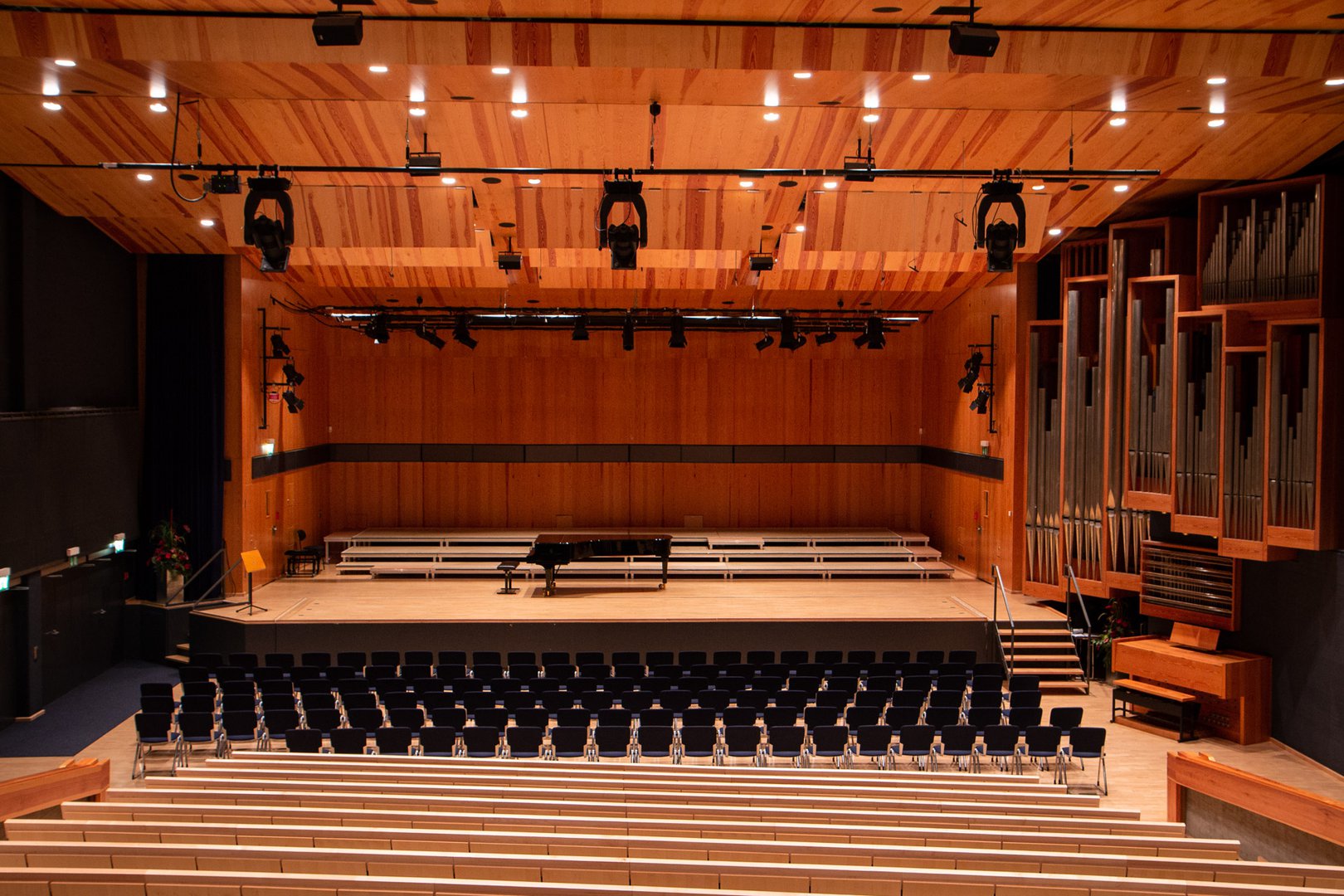Concert Hall | WFS
The "Konzerthaus Detmold" is the largest concert hall Detmold University of Music and has approx. 600 seats. It was built in 1965 - 1968 according to plans by Kurt Wiersing in the Palaisgarten and opened as the "Neue Aula". A modernisation then took place in 2007, when the acoustics were greatly improved and a „Wave Field Synthesis“ system (WFS) with more than 300 speakers was installed in the walls and ceilings.
The stage can hold a smaller symphony orchestra, but can be partially lowered so that there is enough space in the stalls for a wide variety of productions. The concert hall is connected via 144 analogue / digital connections as well as countless fibre optic cables and network cables. These are accessible at the connection panels, each with 8 XLR, 4 BNC-coaxial, 3 LC-LWL and two RJ45 network connectors, and are distributed to the studios via a patch panel on the high stage. An electric winch system operates the six hoists, the position of which can be stored if required.
Since the opening, the concert hall has had a four-manual organ by Johannes Klais (Bonn) with more than 50 sounding stops. This is mainly used for organ lessons, and the room sound can be extended with an artificial reverberation via the WFS loudspeakers (see below).
Wave Field Synthesis in the Concert Hall
Since 2009, the Detmold University of Music has two Wave Field Synthesis (WFS) systems for different applications. The Detmold Concert Hall is equipped with a WFS system from IOSONO / Barco, which allows the spatial reproduction of sounds from up to 32 virtual sources for the performance of modern music as well as three-dimensional soundscapes via 333 loudspeakers on the walls and in the ceiling.
By combining the WFS with the permanently installed reverberation simulation system from SIAP, artists can select an extension of the natural reverberation from 1.6 to 5 seconds at the touch of a button. This enables, for example, the performance of church music or organ works appropriate to the work.
